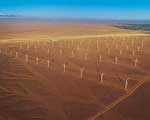Expert says rush to build hydropower poses risks
By Li Jing (China Daily)
2011-04-19 10:24
|
|
|
 |
|
Workers repair the embankment of a reservoir in Zitong county, Southwest China's Sichuan province, in May last year to ensure public safety during the flood season. [Photo / China Daily] |
NANJING - The largest obstacle China must overcome as it looks to build hydropower projects in its seismically active southwestern regions is the need to use technology that will reduce the danger posed by earthquakes and other disasters, a senior water conservation official said on Monday.
"Major water projects currently under construction or in the pipeline in the country's southwestern regions are among the largest in the world their capability to resist floods, earthquakes and other natural disasters has become an issue of increasing public concern," Hu Siyi, vice-minister of water resources, told a conference on Yangtze River protection.
To be safe, hydropower projects should include technologies designed for use in areas characterized by high altitudes, frozen ground and high frequencies of earthquakes, as well as technologies needed to repair dams after they are hit by natural disasters.
| ||||
According to the country's 12th Five-Year Plan (2011-2015), China is to have the ability to generate 310 gigawatts from hydropower by 2015. It has already made good progress toward that goal.
By the end of 2010, the country could produce 208 gW from hydropower, the largest amount that any country in the world can claim.
China's southwestern regions are ideal places for hydropower projects because they contain abundant amounts of water, much of it flowing through rivers. Officials believe those sources can be used to power the development of the country's western regions.
Seven hydropower projects are now under construction in Southwest China's Yunnan and Guizhou provinces. Taken together, they have a capacity of over 70 gW.
But geologists worry about current plans to build dams in that seismically active area, saying earthquakes and landslides not only pose dangers to the projects themselves but also threaten the livelihoods of nearby residents.
Wang Jirong, a member of the Standing Committee of the 11th National People's Congress, submitted a proposal to the country's top legislature that cited geological concerns in calling for a reconsideration of the plans to build dams on Nujiang River in Yunnan.
Hu Siyi was the first official to response to the concerns.
"This is a sign that China's top officials have begun to adopt a more cautious attitude toward hydropower projects in response to Japan's nuclear emergency, which was caused by a deadly earthquake and tsunami," said Zhang Xingsheng, managing director of The Nature Conservancy's North Asia division, an environmental group based in the United States.
Zhang said dam projects planned for the southwest should not be approved without being made subject to scientific appraisals of their potential effects on the environment, a precaution which is "next to nonexistent in the current dam-building sprees" there.
He noted that the Three Gorges Project was only approved following a wait that lasted seven decades. "But some of the projects, which are also large, have been approved for construction in a much shorter period of time."
"Project developers should bear in mind that these geological conditions also pose business risks to them." Zhang said. "Japan's crisis is a reminder that the power of natural disasters should never be underestimated."
But he said it is unlikely that China will slow down its pace of building hydropower projects.







